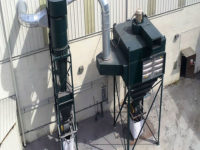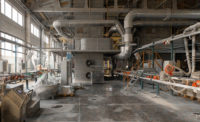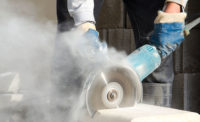Operators of facilities that generate dust during manufacturing processes often rely on high-efficiency cartridge-style dust collectors to reduce worker exposer, manage combustible dust dangers and meet local, state and federal regulations. However, as with any industrial equipment, there are safety measures that facility operators and workers must take to ensure safe operation of the dust collectors themselves. Here are key actions to keep employees safe when operating an industrial dust collector.
Understand regulations, guidelines and standards
Although manufacturing or processing facilities have their own specific dust challenges based on the materials they handle, they all must comply with OSHA’s General Duty Clause, Section 5(a)(1), which requires employers to identify and abate hazards in the workplace. In addition, OSHA has requirements to protect employees from exposure to dangerous airborne particles.
OSHA has established permissible exposure limits (PELs) for hundreds of dusts — ranging from nonspecific or “nuisance” dusts to highly toxic airborne particles — based on an eight-hour time-weighted average (TWA). In addition, if the dust is flammable or explosive, employers must follow National Fire Protection Association (NFPA) standards to provide a safe working environment.
Reduce risk of dust collector explosion
A dust collector is a closed vessel full of dry particles that the fan draws in for filtration. If the fan sucks in a spark or ember, that ignition source could collide with the dust cloud inside the collector and cause an explosion. If the dust collector is not properly equipped with deflagration protection, the explosion will produce a high-pressure wave, fragment the housing and send heat, flames and projectiles into the workplace.
Two key NFPA standards you need to know are 652 Combustible Dust Standard, which provides requirements for managing combustible dust fires and explosions, and 654 Standard for Preventing Fire and Dust Explosions from Combustible Particulates. The most common and cost-effective way to protect your workers from a dust collector deflagration event is to install specially designed explosion vents. An explosion vent opens when pressure builds up inside the collector to let the excess pressure and flame front exit to a safe area. This helps to prevent the dust collector from blowing up in the event of a deflagration.
Practice safe dust collector maintenance
Filter replacement is a major part of dust collector maintenance. Having to enter the dust collector during service puts workers at risk of potential entrapment and would likely require the facility operator to obtain a confined space entry permit. It also puts them in contact with hazardous materials. Fortunately, many cartridge-style dust collectors do not require entry for maintenance. These collectors provide safe access to the filters, as they easily slide in and out of the housing. Look for doors that provide access from either side and have lockout features for worker safety.
For collectors with pulse cleaning systems, it is safest to pulse them down prior to change-out to remove as much dust as possible from the filters. Be sure to allow time for the dust to settle before opening the access door. Install the new filters and close the collector as quickly but safely as possible. To prevent dust from escaping the used filters, immediately dispose of them by sealing them in the new filters’ shipping boxes. Also, empty the collector’s waste storage container often to prevent dust from backing up into the hopper and clogging the system.
Install safety equipment
Additional equipment to enhance safe dust collector operation includes:
- Lockout/tagout doors to prevent injury or exposure caused by inadvertently opening doors during a pulsing cycle. This also ensures that the collector is shut off during maintenance and cannot be restarted until the work is completed;
- OSHA-compliant railed safety platforms and ladders with fall arrest systems to prevent slips and falls when workers access the dust collector for service;
- Bag-in/bag-out (BIBO) filter containment systems to isolate workers from toxic dust during change-outs;
- Vertically mounted filters, if your collector allows, because pulling out a dirty, heavy overhead horizontal filter creates a risk of physical injury.
An industrial dust collector and its components are important pieces of safety equipment in dry processing and manufacturing facilities. However, as with all equipment, it is vital to practice safe maintenance of dust collectors. If you have any questions about the tips presented above or additional queries, consult an established, reputable dust collector expert for advice specific to your situation.



